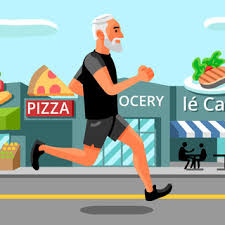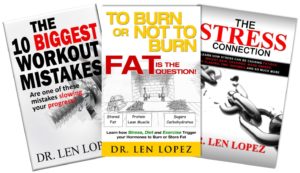Blog
Is it Better to Walk or Run
Walking and running are two great exercises to help…
- Burn Fat
- Add shape and tone to your legs and rear-end?
- Reduce your risk of a heart attack?
The better question to ask might be which is better for me?
What’s great about walking, for most people, Not All, is that it triggers Aerobic respiration and triggers your metabolism to burn calories from fats. That’s a great benefit for overall health and wellness. The only concern is that you have to make sure you are walking at a pace that keeps you in your ‘fat-burning’ zone if you want to burn FAT.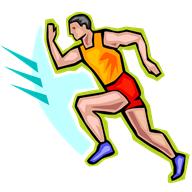
If you walk or jog too fast or at a pace that is above your ‘aerobic threshold’ (also known as your ‘fat-burning’ zone) – you go from using aerobic respiration into ‘anaerobic’ respiration. When that happens, your metabolism shifts and is forced to burn calories from carbohydrates and proteins (lean muscle) for energy – instead of FATS.
The obvious benefit of walking, jogging or any type of activity (swimming, biking, hiking, dancing, etcetera) that triggers aerobic metabolism is that it helps you burn fat, which needs no explanation. The other big benefit is that it helps your cardiovascular system and improves your ability to carry more oxygen to and from the heart, brain and any other muscle that needs it. This will help decrease your risk of a heart attack or stroke.
Unfortunately, a lot of people who start walking, jogging, biking, etcetera…think that as long as you burn calories, you are burning fats. Not true – but it’s the pace or the speed at which you go that determines if you’re burning fats or sugars (carbohydrates and proteins). They assume that walking, jogging, biking is all aerobic and that they are burning fat. Too often than not, their pace is a little too fast for their level of aerobic conditioning, which causes their aerobic exercise to become ANAEROBIC for them.
What that means is, they’re not burning fats, nor are they really helping to improve their health. Worst than that – it’s more than likely that all the calories they burned walking, jogging, dancing, hiking, etc – at a pace that’s a little too fast for them, caused their metabolism to burn carbs and proteins (Lean Muscle). And the absolute worst thing you can do when you train is to Burn Lean Muscle (proteins) for energy. It’s OK to burn carbs for energy when you workout, I do it all the time, it’s intentional!
Adding Lean Muscle
Yes, walking is exercise, but it’s Not Very Stressful or demanding. Jogging is more stressful than walking. Running and sprinting are even more stressful. The point I’m making is that the more intense your workout, the faster you jog, run, sprint, etcetera – the more stressful it is on your body. This causes a greater spike of testosterone (TT) and growth hormone (GH).
Why is that important? TT and GH are needed to add lean muscle, but it’s also going to keep you from losing lean muscle. This is something that is pretty important for those of us over 40.
So, jogging, running, biking, swimming or any other aerobic-like activity is great and can help you burn fat, if you are going the right pace for your level of conditioning. But it’s when you go faster and make it more intense and start sprinting that you produce the greatest surge in TT and GH. Simply said, if you want to add shape and tone to your lower body or any part of your body – you need TT and GH, which means you need to increase your intensity.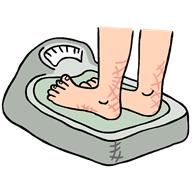
Remember, just because you burn calories when you exercise – doesn’t mean you burned calories from stored body fat. If you’re looking to add lean muscle and burn fat – you have to train smart. Maybe one workout, you walk and make it purely aerobic to help you burn fat. But the next workout is designed to help you add lean muscle, so you make that workout more intense.
Sure you can jog and train for 30-60 minutes and burn a bunch of calories, but did you burn calories from fats? Or did you burn sugars (carbs and proteins)? Too many times people complain that yeah, I’ve lost weight, but I haven’t been able to get rid of the flab or add any lean muscle. This is typically because their workouts are causing them to burn proteins (lean muscle) for energy, instead of fats.
Getting a heart rate monitor is one of the best investments you can make because it will help you track how fast your heart is beating when doing your aerobic workout. I’m a huge fan of using a heart rate monitor when doing aerobic (fat-burning) training. I don’t necessarily worry about using a heart rate monitor when do high intensity or any type of endurance training. Remember aerobic exercise is low intensity, long duration.
If you’re not sure how fast your heart should beat when doing aerobic training. The simple answer is that your aerobic threshold (fat burning zone) should be anywhere between 50-85% of your maximum heart rate. 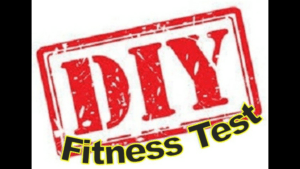
Only your well trained, elite marathoners and triathletes can train aerobically at 80% of their heart rate and still burn FATS. So, if you’re not the elite endurance athlete…your heart rate should be anywhere between 50-75% of your max heart rate. So Slow Down!
Go check out our DIY Fitness Test to determine how fast you should be going to ensure you are burning fats when you train. In my opinion, I don’t like letting My TEAM down…My Time, Energy and Money. So Train Smart!

